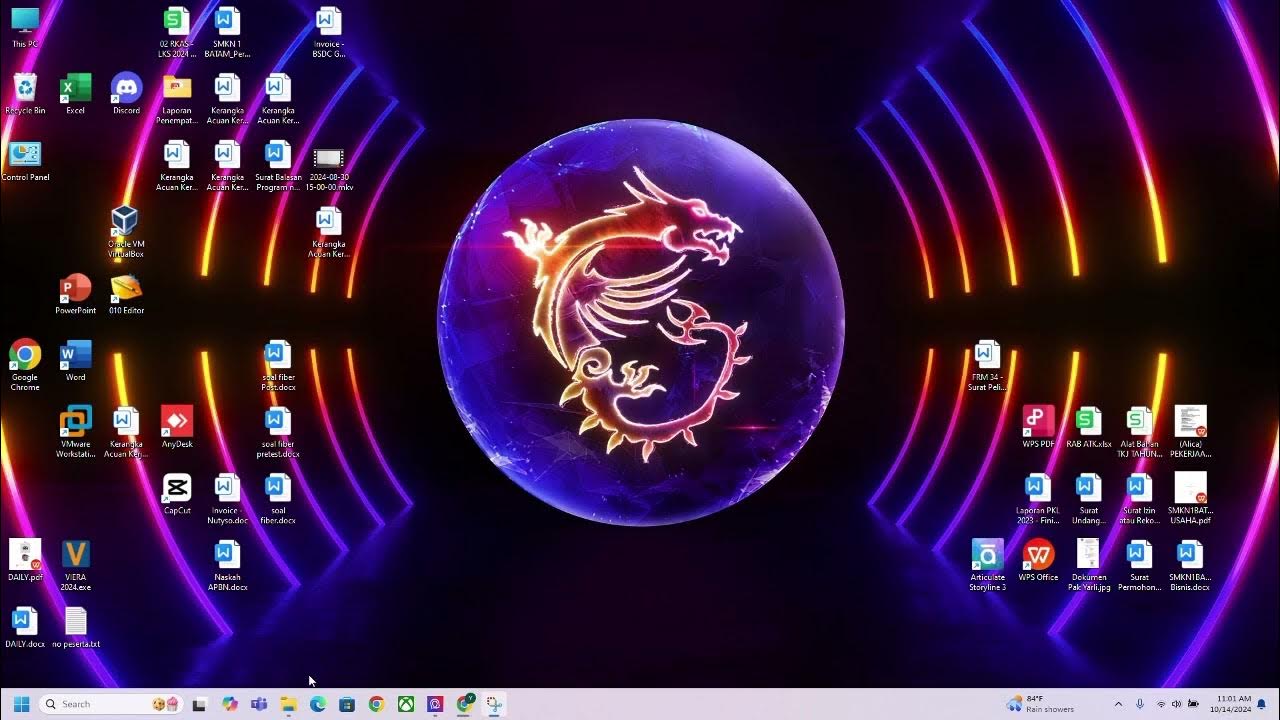Cara Install Linux Debian 10 pada Virtualbox | Full Tutorial
Summary
TLDRThis tutorial provides a step-by-step guide on how to install Debian 10 on VirtualBox, specifically focusing on the 32-bit version. It covers everything from creating a virtual machine, configuring settings, and installing Debian with a graphical user interface (GUI). The video demonstrates partition setup, network configuration, and software selection for a successful installation. The viewer is also guided through configuring user accounts, time zones, and the system’s desktop environment, ultimately showcasing the final Debian setup with full access to Linux applications.
Takeaways
- 😀 Make sure you have downloaded the correct ISO file for Debian 10 (32-bit version) before starting the installation process.
- 😀 Install VirtualBox version 6 or higher for compatibility with the Debian installation process.
- 😀 Set up a new virtual machine (VM) by selecting 'New' in VirtualBox, naming it, and choosing the appropriate Debian version (32-bit).
- 😀 Ensure the memory (RAM) allocated for the VM stays within the green range to avoid errors during virtual machine startup.
- 😀 Select the VHD file type for the virtual hard disk to make it easier to backup and move the installation files.
- 😀 Adjust the virtual hard disk size to a reasonable value (e.g., 32GB) depending on whether you’re installing a GUI or CLI version.
- 😀 In the network settings of VirtualBox, set the VM's network mode to 'Internal Network' or 'Host Only' if you don't want the VM to connect to the internet.
- 😀 Make sure to insert the Debian ISO file into the virtual machine's storage settings before starting the installation.
- 😀 Choose the 'Graphic Install' option for a GUI-based installation process, which allows the use of a mouse and provides an easier setup experience.
- 😀 During installation, select 'English' as the language, choose 'Indonesia' as the location, and configure the network and keyboard settings according to your preferences.
- 😀 When creating a root user password, ensure that the password is secure, but also memorable for easy access to administrative rights.
- 😀 During partition setup, opt for automatic partitioning for simplicity. If you choose manual partitioning, four partitions can be created for the Debian installation.
- 😀 For the software selection, make sure to choose the 'Debian Desktop Environment' and 'Standard System Utilities' for a GUI-based installation.
- 😀 At the end of the installation process, always install the GRUB bootloader for proper system booting.
- 😀 After installation, log in using the root credentials or the user created during setup to access the Debian system and test its functionality.
- 😀 For accessing the terminal as a root user, use the 'su' command and enter the root password. The terminal prompt will change to '#' when logged in as root.
Q & A
What is the main objective of the tutorial?
-The main objective of the tutorial is to show how to install Debian 10 on VirtualBox using a 32-bit version of Debian.
What version of Debian is being installed in the tutorial?
-The tutorial demonstrates the installation of Debian 10, specifically the 32-bit version (i386).
What software is required to run the Debian installation on VirtualBox?
-The tutorial requires the installation of VirtualBox, specifically version 6, as the platform for running Debian.
What should the user do if they haven't installed VirtualBox yet?
-If VirtualBox isn't installed, the user is advised to download and install it. The download link is available in the video description.
What is the recommended virtual hard disk type to use in VirtualBox?
-The tutorial recommends using the VHD (Virtual Hard Disk) format for the virtual machine's hard disk as it is easy to backup and transfer.
How does the tutorial suggest setting up the network for the virtual machine?
-The tutorial suggests changing the network adapter to 'Internal Network' or 'Host-Only' to avoid the virtual machine automatically connecting to the internet during installation.
What is the difference between the 'Graphic Install' and 'Install' options?
-The 'Graphic Install' option allows the use of a mouse and graphical interface during installation, while the 'Install' (CLI) option requires the use of the keyboard only, with no mouse support.
What should the user select if they want to install the graphical user interface (GUI) version of Debian?
-To install the GUI version, the user should select the 'Debian Desktop Environment' package during the software selection phase of the installation.
What partitions are created automatically when using the 'Automatic Partition' option?
-When using the 'Automatic Partition' option, two partitions are created: the root partition and the swap partition.
What is the significance of installing the GRUB bootloader during the installation?
-Installing the GRUB bootloader is crucial for the system to boot properly. If it is skipped, the installation will fail.
Outlines

This section is available to paid users only. Please upgrade to access this part.
Upgrade NowMindmap

This section is available to paid users only. Please upgrade to access this part.
Upgrade NowKeywords

This section is available to paid users only. Please upgrade to access this part.
Upgrade NowHighlights

This section is available to paid users only. Please upgrade to access this part.
Upgrade NowTranscripts

This section is available to paid users only. Please upgrade to access this part.
Upgrade Now5.0 / 5 (0 votes)





